
Newsletter Subscribe
Enter your email address below and subscribe to our newsletter

Enter your email address below and subscribe to our newsletter
Your Source for Game News and Guides
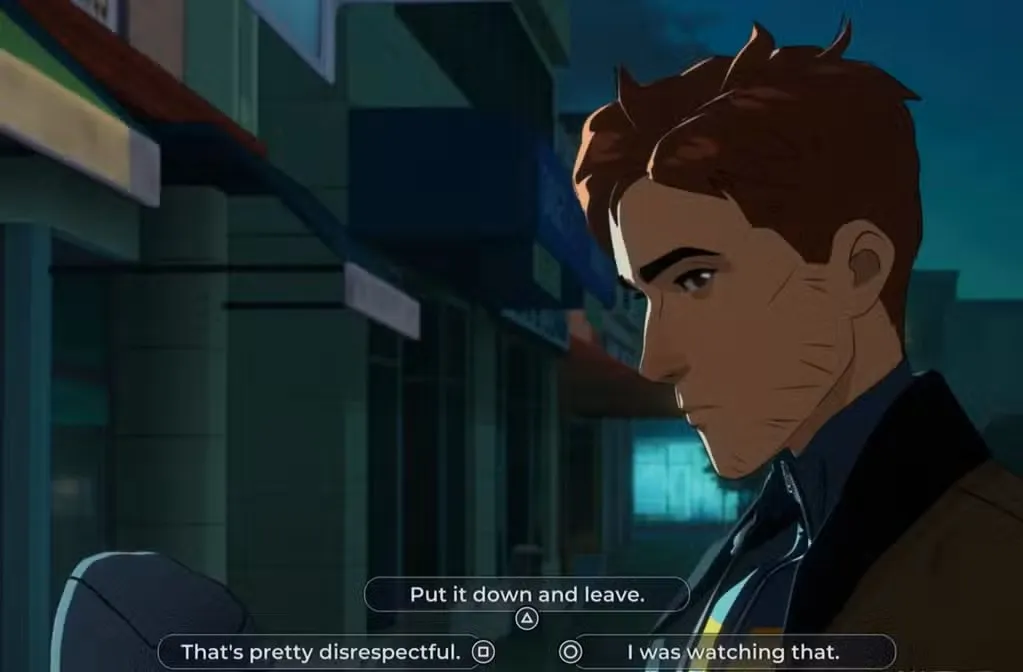
So you’ve jumped into Dispatch and quickly realized this isn’t your average button-masher. This superhero narrative adventure throws choice after choice at you, and unlike some games that pretend your decisions matter, Dispatch actually tracks some of them for real consequences down the line.
The thing is, figuring out which choices are just flavor text and which ones will come back to haunt (or help) you later? That’s the million-dollar question. I’ve played through Episode 1 multiple times to map out exactly what matters, and I’m breaking it all down for you right here.
Fair warning: If you picked the “Interactive” experience mode, keep your reflexes sharp—there are QTE (Quick Time Event) sequences scattered throughout, and they can get intense.
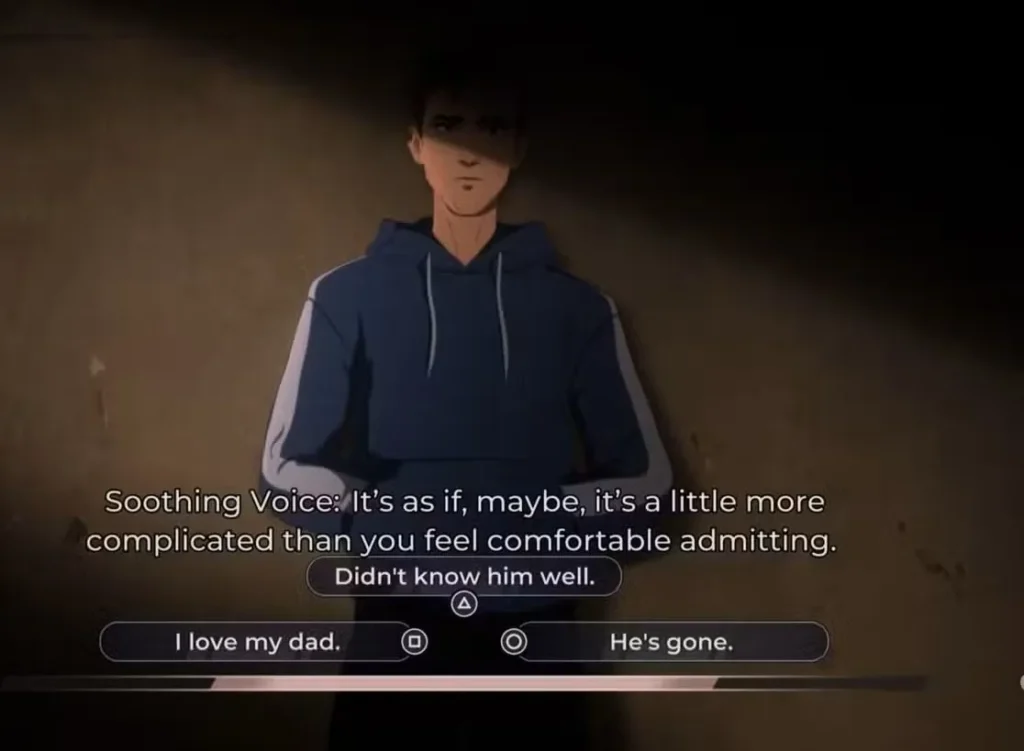
Right out of the gate, you meet Robert lying on the floor, having what seems like a therapy session or interrogation (the game keeps you guessing). The conversation gets personal fast.
Your options:
Does it matter? Nope. This is pure character-building. Pick whichever resonates with how you want to play Robert. There are zero consequences here—it’s all about establishing your emotional baseline.
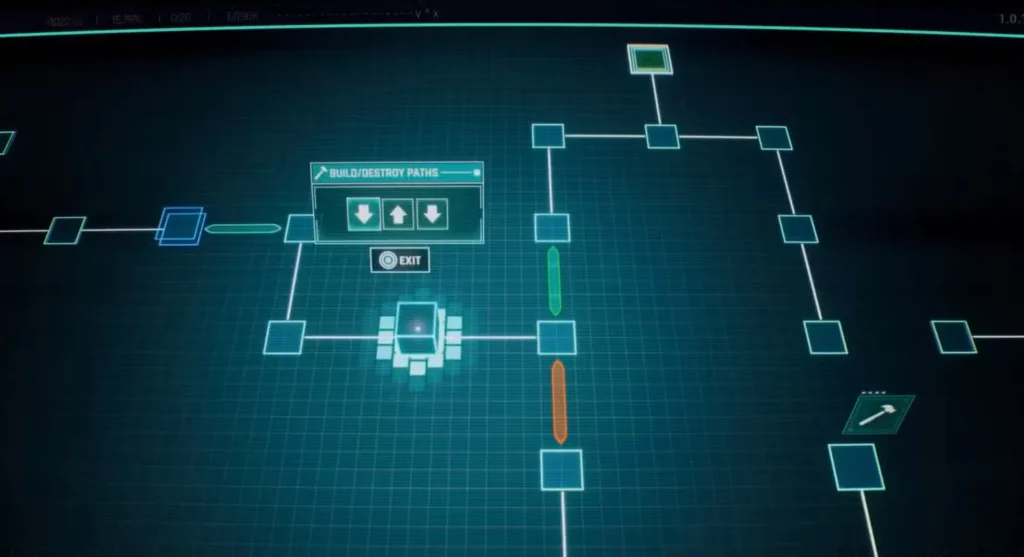
After some conversation, Robert drags a goon onto a balcony and you get a more visceral choice:
Does it matter? Slightly. Choosing “Let Him Drop” triggers a different interaction later in the episode. Nothing earth-shattering, but it adds a small ripple to your playthrough. If you’re curious about seeing variations, this is worth experimenting with on a second run.
My take: This is Dispatch testing your moral compass early. Are you playing Robert as someone who’s lost his edge, or someone clinging to heroic ideals? The game notices, even if it doesn’t punish you either way.
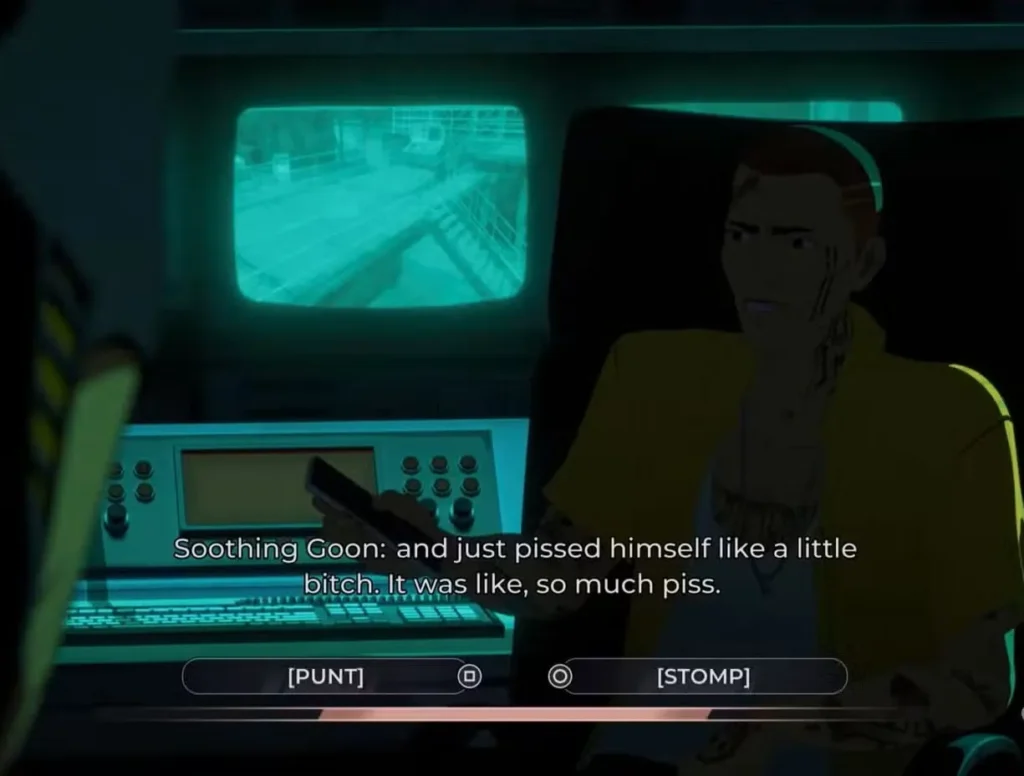
After your first round of QTEs (if you’re on Interactive mode), you’ll hit a hacking sequence. This isn’t a choice-based moment, but here’s the trick: you need to open paths strategically.
Access one data square first, then backtrack to open the alternate path for the remaining squares. It’s straightforward once you understand the pattern, but easy to fumble if you’re button-mashing without thinking.
You bust into the security room and get to deliver a classic superhero one-liner:
Does it matter? Not even a little. Choose based on your vibe—stoic hero, edgy antihero, or crude brawler. The story rolls on the same either way.
Immediately after, you get an action choice:
Does it matter? Only visually. You’ll perform a different beatdown animation, but the outcome is identical. It’s basically “pick your favorite finishing move.”
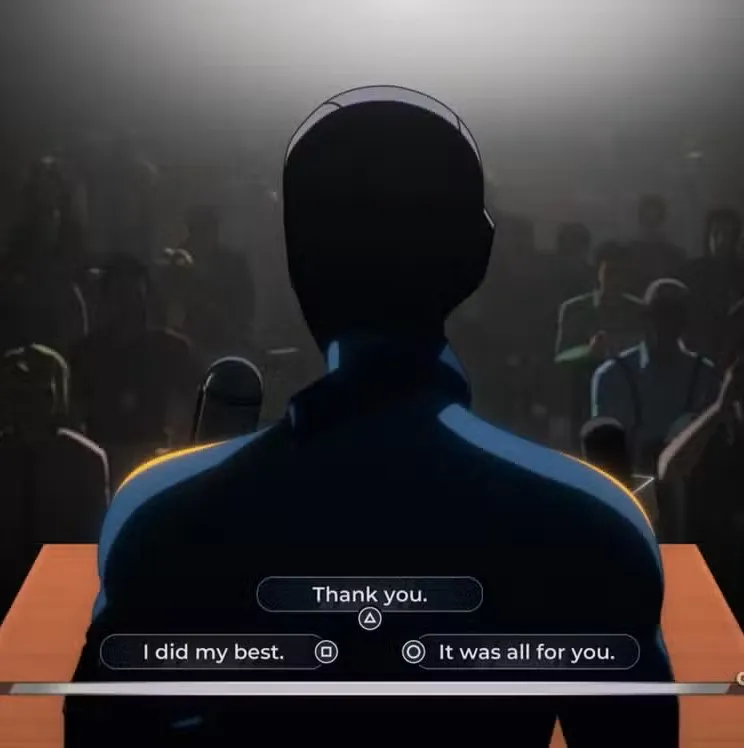
During another extended QTE sequence, the villain Toxic tries to talk you out of your plan. You can respond with:
Does it matter? Nope. All roads lead to the same cutscene. This is dramatic tension without actual branching—think of it as choosing your flavor of disbelief.
Here’s where things get interesting. After the big action sequence, you face reporters with three questions. The third one actually matters.
Consequence: None. Say whatever feels right.
Consequence: None. The media circus continues regardless.

Now we’re talking. Here’s where that Reputation system kicks in:
Why this matters: Dispatch tracks your public image, and it will likely affect how characters treat you and what opportunities open up later. Starting with positive reputation is generally smart, unless you’re deliberately playing a “fallen hero” arc.
Outside a store, you witness a robbery in progress. The game throws three quick-fire choices at you:
Consequence: None. Just setting the tone.
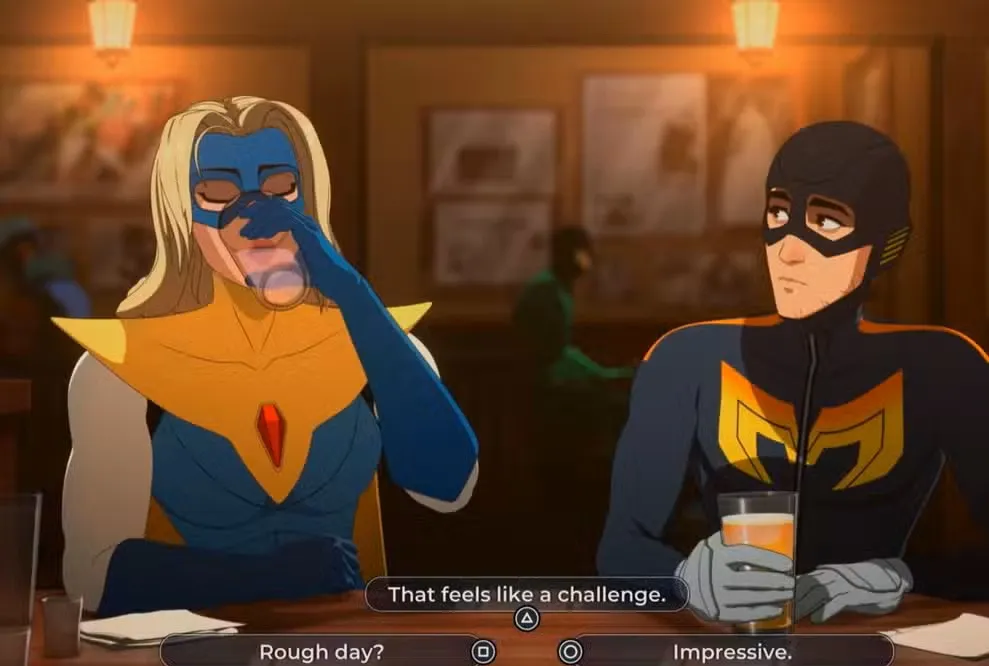
Consequence: None for the story, but this is a great character moment. Robert’s questioning his identity—which answer feels true to your version of him?
Consequence: Only the LEFT punch lands cleanly. Right punch misses. Minor tactical difference, but you’re getting beaten down either way (it’s a story beat).
Pro tip: This whole sequence is designed to show Robert at his lowest. Don’t stress about “winning”—the narrative needs you to fail here so Blond Blazer can make her entrance.
After Blond Blazer saves you from the beating, she offers to fix your arm:
Consequence: None. Pick your flavor of stubbornness or gratitude.
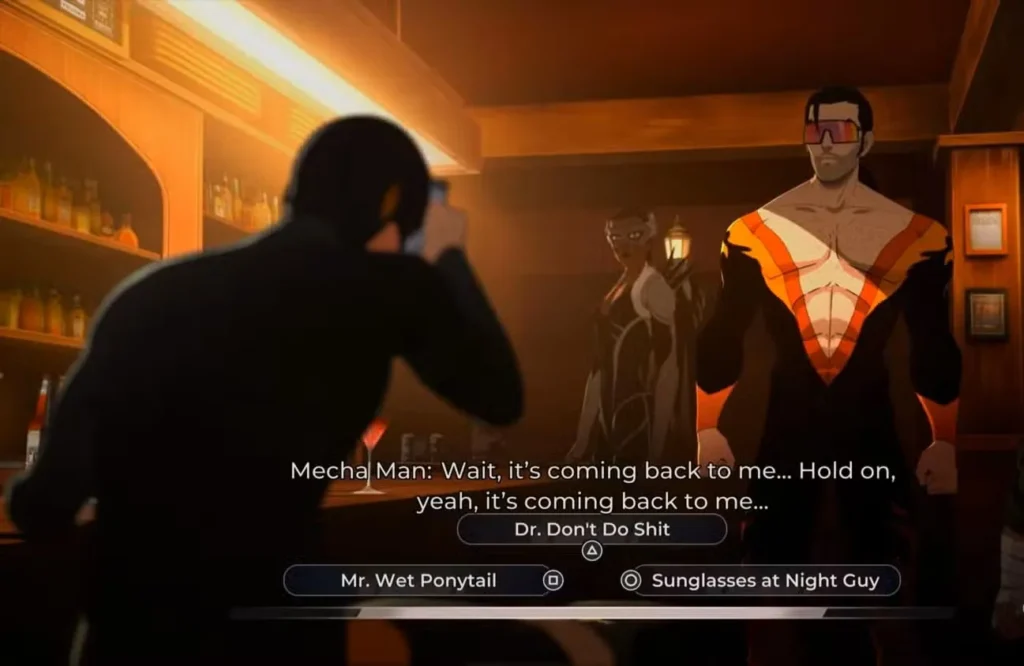
The bar conversation with Blond Blazer is where Dispatch starts tracking relationship points. Pay attention here.
Consequence: None. Social lubrication.
Why this matters: Dispatch is all about the bonds between heroes. This is your first real chance to build (or damage) your connection with a key character. If you want Blond Blazer as an ally, show some idealism here.
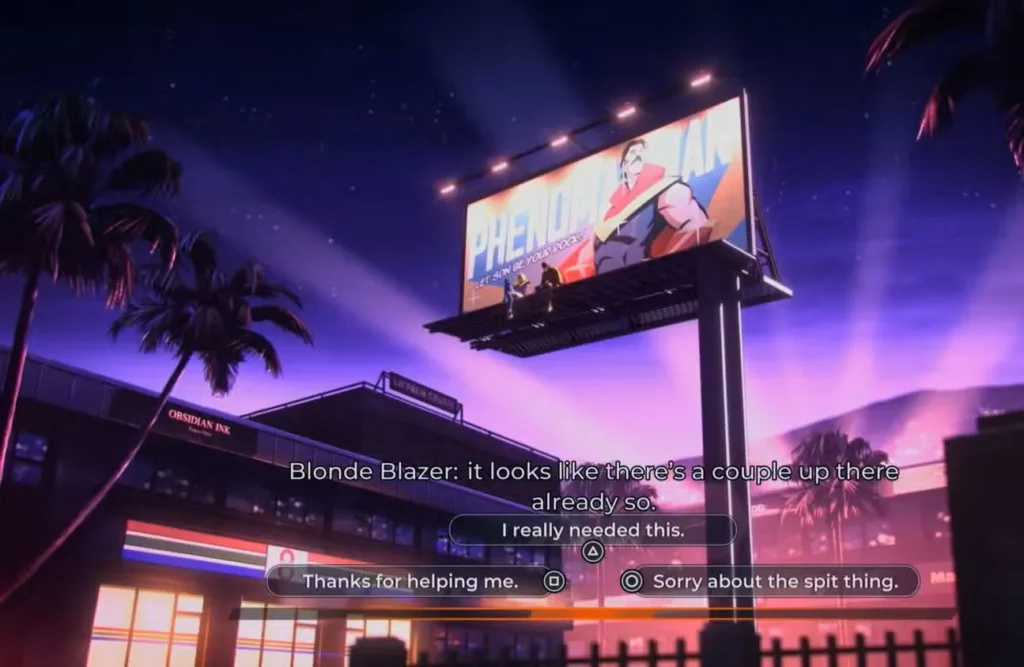
Consequence: None. More banter.
When the fire-themed character Flambae starts causing trouble, you get two choices that create fun callbacks later:
Consequence: No major story impact, but your chosen nickname gets referenced later. Pick the one that makes you laugh.
Consequence: This changes your next dialogue option with Blond Blazer AND the cutscene with Flambae. Water is the “smart” choice (puts out fire), alcohol is the “chaotic” choice (makes it worse). Both work narratively, but the cutscene plays out differently.
When Blond Blazer asks what happened:
The middle option literally changes based on your previous choice—nice touch, Dispatch.
Blond Blazer takes you to a scenic overlook near the Hollywood sign for a heart-to-heart. Multiple dialogue options follow:
Consequence: None. Social niceties.
Consequence: This is likely a major relationship fork. Kissing her opens (or closes) certain story paths. If you’re interested in a romance subplot, this is your green light. If you want to keep Robert focused on the mission, let it pass.
My take: The game presents this as a genuine “do you want this relationship to be romantic?” moment. It’s not a “test” where one answer is correct—it’s about what story you want to experience.
Then:
Consequence: None. The job offer is happening regardless.
Blond Blazer gives you high-tech glasses and you enter the Dispatcher system—basically a superhero 911 operator interface. You’ll need to match heroes to emergencies based on their stats.
Important: You can fail these calls even when sending the “best” option due to percentage-based success chances. Don’t stress about it—the tutorial is designed to show you the system mechanics, not punish you for learning.
Gameplay tip: Look for stat matchups (Speed for chases, Strength for brawls, Intelligence for defusing situations). Higher percentages are better, but nothing’s guaranteed.
After your wild day, Robert returns home to his dog. One last dialogue choice:
Consequence: None. Just a wholesome moment to end the episode.
After all that, here’s what you should focus on:
Choices with REAL consequences:
Choices with minor variations:
Pure flavor choices:
Here’s the beautiful thing about Dispatch: it doesn’t require you to game the system. The choices that matter are clearly telegraphed through the relationship/reputation mechanics. Everything else? That’s the game letting you define who Robert is.
Don’t overthink the flavor choices—pick what feels authentic to your character concept. Want to play a washed-up hero clinging to old ideals? Go for it. Want to play someone embracing their darker side? That works too.
The real magic is in how Dispatch makes you feel like your choices matter through smart writing and character reactions, even when they don’t mechanically branch the story. That’s quality narrative design.
Check out Dispatch on Steam if you haven’t already—it’s one of the more thoughtful superhero narratives to come out recently, and Episode 1 is just the appetizer.
Now get out there and dispatch some heroes. And maybe kiss Blond Blazer. Or don’t. That’s the beauty of choice-based games, right?
What choices did you make in your playthrough? Did you go full hero or lean into Robert’s darker moments? The stats screen at the end shows how your choices compare to other players—always fun to see where you land.